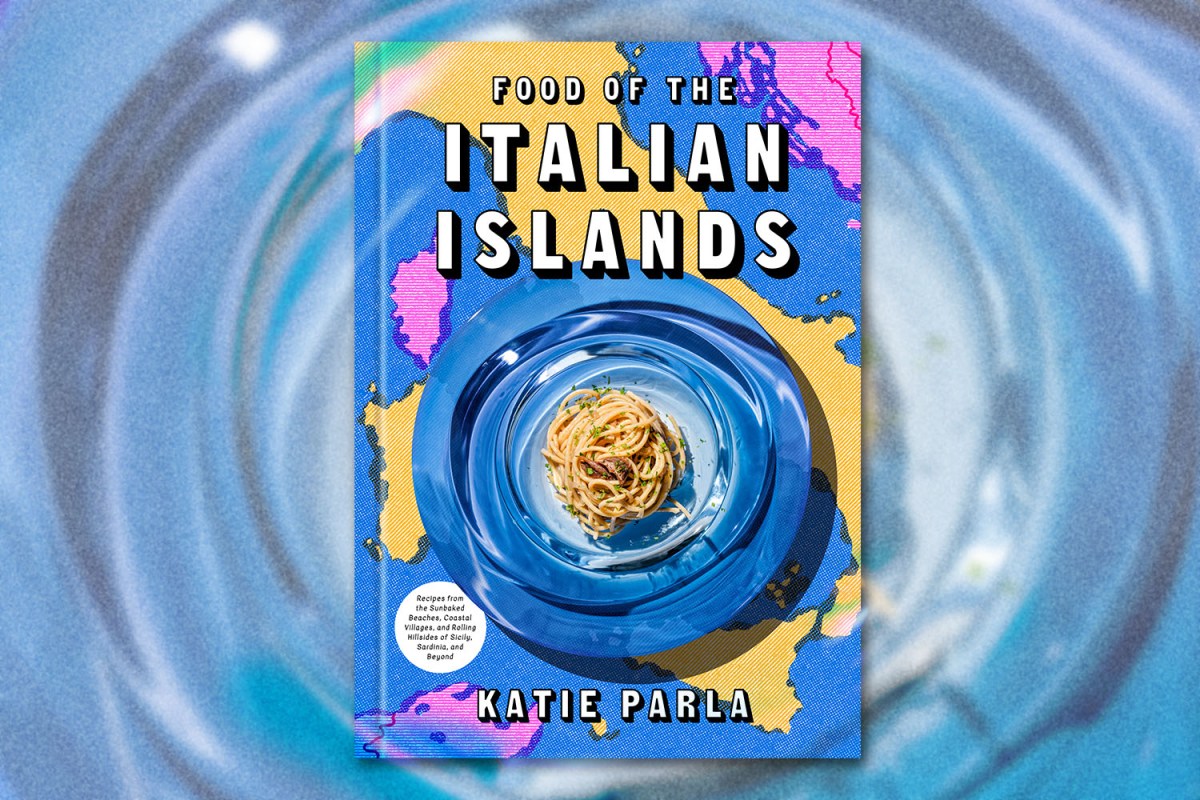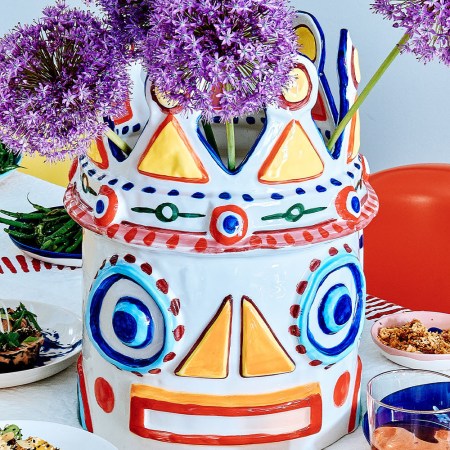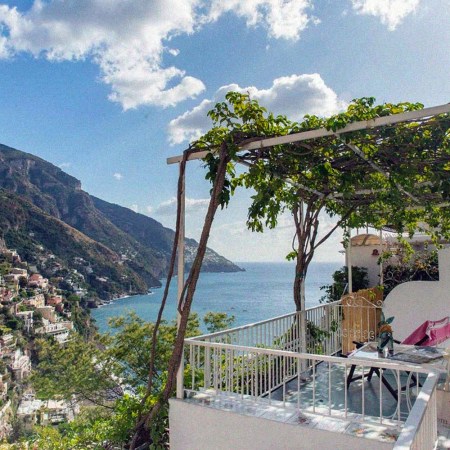Anyone who’s traveled throughout Italy or is well-versed in Italian cuisine knows how much it differs from region to region, even from town to town. After all, Italy was only united in the mid-1800s, meaning there are very real and different cultural identities throughout the country. Katie Parla — an author, culinary guide and Emmy-nominated television host — has dedicated her career to the foodways of Italy, and her latest cookbook celebrates the country’s vibrant coastal cuisine. Food of the Italian Islands will give you wanderlust in the best way with recipes and stories from the sun-baked shores of Sicily, Sardinia and beyond.
Parla grew up in an Sicilian-American household in New Jersey but has been living in Italy for the last 20 years. And just how many Italian-American traditions are quite different from those in Italy, Parla discovered how foods from her childhood are quite different from what you actually find in the old country. “We’re told Sicilian people came on a boat and they left because they were all starving,” she says. “But just a generation earlier, Sicily was one of the most prosperous agricultural parts of Europe. And so there’s a real disconnect between the stereotype you hear about from your family and what actually is on the ground.”
It makes sense that Sicilian-American food culture differs greatly from that of Sicily. But even as you travel around Sicily and its smaller islands, the culinary differences are incredible. One recipe where this is the most obvious is pesto.
Melissa Clark Talks “Dinner in One” and Her Favorite All-Purpose Kitchen Tools
Her latest cookbook is all about creating delicious meals with less time and cleanup“There are similarities that make the islands feel like there’s some coherence from place to place, but each of the cuisines is an expression of the produce that’s available, the foreign influence and the domestic agricultural practices,” Parla says. “So it’s interesting to see how different places approach a similar concept, like pesto. There are four pestos from Sicily [featured in the book], and each is an expression of whatever nut happens to be popular.”
You’re probably most familiar with pesto alla genovese, the bright green version that hails from the north, typically made with basil, pine nuts and cheese. But the pasta condiment is as diverse as it is delicious. Cooks around Mount Etna use their beloved pistachios along with mint and basil. Tomatoes, garlic and almonds go into the creamy version from Trapani. And in Pantelleria, where they are famous for their caper fields, the punchy buds make for a savory pesto that might be my new favorite.
Capers are one of those cooking ingredients that I absolutely love, but I never thought much about where they come from or how they’re made. Like olives, capers can’t be eaten right off the bush — they need to be cured in salt or brine to make them palatable. But perhaps the most interesting thing about them is that they thrive in inhospitable environments.
“Capers grow everywhere,” Parla said. “It’s actually very hard to cultivate them — they want to live in impoverished crevices. And so when you walk out of the door in Rome, they’re growing in cracks and bricks.”
But Italy’s main caper industry is in Pantelleria, which, Parla mentions, is actually closer in distance to Tunisia than Italy. And although Parla admits she’s not a morning person, the caper harvest is one occasion where she can justify the early call time. “I got to spend a lot of time over the past few summers in Pantelleria and saw the harvest going on, which happens in phases because you really can’t be outside in the middle of a field with no shade,” she says. “So people will go out early in the morning, they’ll pick for like four hours and then they’ll go back two weeks later to pick more. And in the meantime, they’re salting and processing, and they just have so many freaking capers to deal with.”
If you grew up with Italian grandparents, food waste wasn’t a common thing — old wine became vinegar, stale bread was whizzed into breadcrumbs and carrot greens and celery leaves were thrown into salads. Following a similar no waste-mentality, one of Pantelleria’s premier caper companies, La Nicchia, thought to use the caper leaves in addition to the buds. “It’s something I’ve only ever seen in Cyprus and different parts of Greece — the actual salting of the caper leaves, and they taste exactly like capers,” Parla says. “I love a caper leaf salad next to some grilled fish. It’s really yummy.”
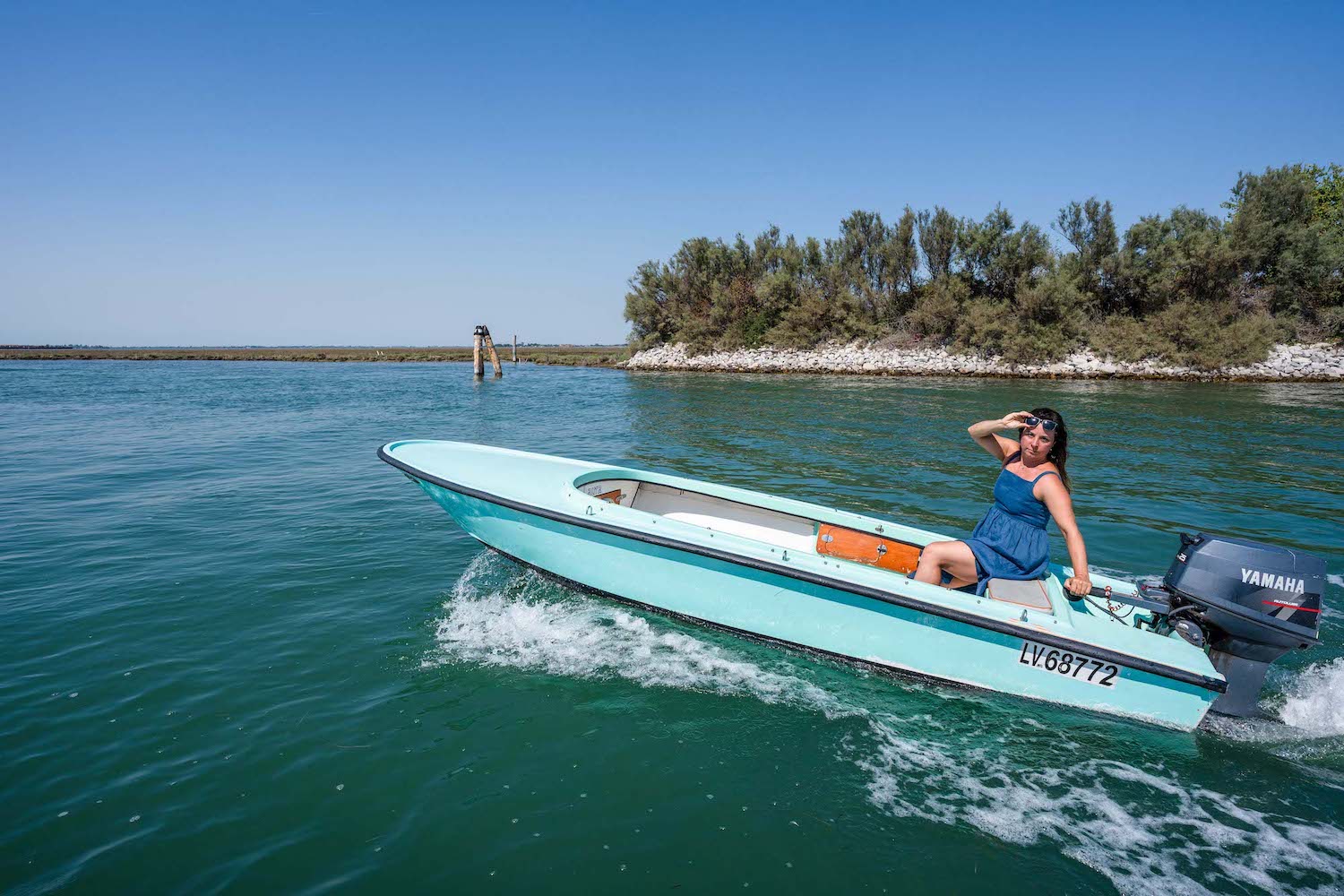
The Italian islands have a lot of niche foods that not many people choose to eat — but then you try something out of the ordinary and discover that it’s really delicious. Take for example the pane ca meusa, a Palermo-famous sandwich that’s stuffed with sheep’s milk cheese and veal spleen that’s been boiled then sauteed in lard. A squeeze of lemon makes it a near-perfect bite. When researching this book, Parla discovered another local ingredient that mostly always goes overlooked — with the exception of one home cook she was lucky enough to meet.
“I always have the best time when I go to my friend Tommaso’s house,” she says. “His mom’s name is Raffaelina — she is the cleaner of an elementary school in her village and then sometimes also works at a local trattoria. When she’s not doing both jobs, she cans the tuna and the tuna roe that her son fishes. And she is the only person I’ve ever met who goes out and harvests the nopales that are all over Italy.”
Nopal is Spanish for opuntia cacti, and their pads are a common ingredient in Mexican cuisine. But when it comes to Italian food, this is certainly the first time I’ve heard about the prickly ingredient being used. “The crop, introduced from Mesoamerica, now grows wild all over the place and no one cooks with them,” Parla adds. “But she [Raffaelina] makes parmigiana di palette. It’s like an eggplant parm, but with cactus pads.”
And yes, Parla includes a recipe for parmigiana di palette in the book. As someone who lives in a neighborhood with a lot of wonderful Mexican grocery stores, I can’t wait to pick up the ingredient and try it for myself.
Food of the Italian Islands is a true love letter to Italy, and not just because it highlights the cuisine and traditions of some of the country’s most diverse and special regions. When I asked Parla if there was anything else she wanted people to know about the book, she was excited to say that it’s entirely made in Italy.
“I had it printed in Brescia and bound in Bergamo,” she says. “The cover was made in a small little factory using this hot foil technique. This guy Luigi had to come out of retirement because he’s the only one who can use the machine that no one needs anymore. The craft of printing and binding is still really present in Italy. So it was amazing to also integrate that into the book publication.”
Food of the Italian Islands was released this week and is available for purchase on Parla’s website. In the meantime, enjoy the recipe for one of Parla’s favorite pesto variations, Pasta Cu L’Agghia or Pesto From Trapani.
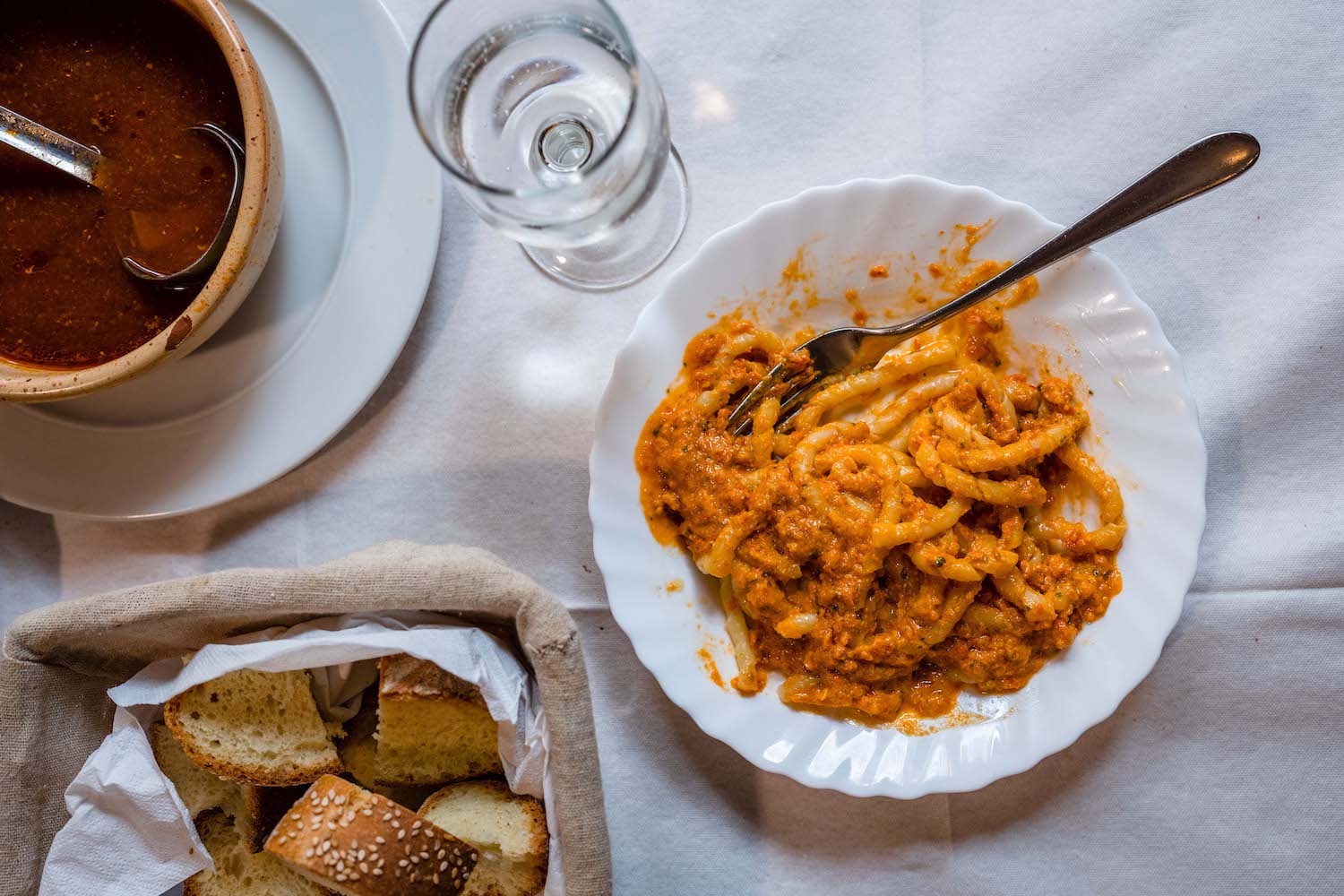
Pasta Cu L'Agghia
Total Time: 45 mins
Servings: 4 to 6
Ingredients
- 1 lb. Roma (plum) tomatoes, blanched, peeled and roughly chopped
- Leaves from 1 bunch basil (about 1 packed cup)
- 1 cup blanched almonds, roughly chopped
- 2 garlic cloves, peeled
- Fine sea salt
- 1/4 cup extra-virgin olive oil
- 1/2 cup finely grated pecorino cheese
- 1 lb. busiate or spaghetti
Directions
-
-
Bring a large pot of water to a rolling boil over high heat.
-
Meanwhile, in a food processor, combine all ingredients except the olive oil, cheese and pasta. Pulse until chunky. Slowly add the olive oil and process until smooth.
-
Transfer the pesto to a large bowl, and stir in the cheese.
-
When the water comes to a boil, add salt until it tastes like a seasoned soup. Add the pasta and cook until al dente if it’s dried, or cook until it floats and loses its raw flavor if it’s fresh.
-
Drain the pasta, reserving some of the cooking water. Add the pasta to the pesto and stir to coat. Add some of the reserved pasta cooking water a spoonful at a time as needed to loosen the sauce. Season with salt to taste and serve.
-
Join America's Fastest Growing Spirits Newsletter THE SPILL. Unlock all the reviews, recipes and revelry — and get 15% off award-winning La Tierra de Acre Mezcal.
